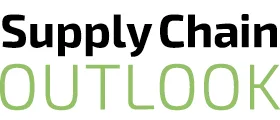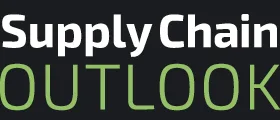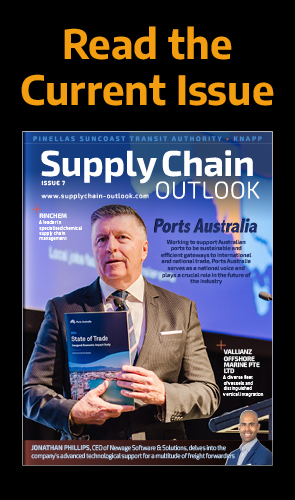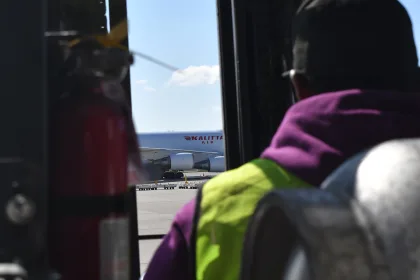Aaron Geiger, Director of Sales at leading advanced analytics and optimisation solutions provider ORTEC, assesses how global supply chains have shifted from a reactive to proactive model and reflects on the future potential of an industry that is building smarter, more adaptive networks that transform complexity into opportunity.
FROM ROUTE OPIMISATION TO CONTROL TOWERS
The foodservice distribution and logistics industry has reached a tipping point.
Shifts in consumer behaviour, fluctuating demand, rising operating costs, and increasingly complex delivery networks are making it impossible for companies to thrive by relying on the old way of doing things.
For decades, many distributors operated reactively by putting out fires as problems emerged. But in today’s volatile environment, firefighting is no longer sustainable.
Instead, logistics leaders are embracing a proactive, data-driven model. With advanced optimisation, real-time visibility, and intelligent delivery zone design, distributors are not just protecting margins – they are redefining efficiency, reliability, and service.
FROM REACTIVE TO PROACTIVE
Historically, foodservice distributors and logistics providers relied on static plans, manual workarounds, and last-minute fixes.
This reactive model inevitably led to wasted miles, underutilised fleets, missed service windows, and overworked drivers.
Modern optimisation tools are enabling a fundamental shift. By blending advanced route and load planning with predictive analytics, organisations can anticipate challenges and adjust proactively.
The results are transformative, in which route and load planning reduce mileage, cut fuel consumption, and lower carbon footprint.
Smarter truck utilisation ensures fleets are maximised, eliminating unnecessary trips and improving capacity efficiency. Distributors can now deliver with greater precision, offering reliable delivery windows that strengthen customer trust.
At the same time, driver productivity improves as efficient schedules reduce overtime and fatigue. When demand or orders fluctuate, advanced tools allow immediate adaptation, helping companies respond quickly without disrupting operations.
Just as importantly, cross-team alignment becomes easier since planning, sales, and service teams all operate from the same set of real-time data.
The transition to proactive, analytics-driven operations is no longer aspirational – it is actively transforming distribution networks today.

CONTROL TOWERS AS THE NERVE CENTRE
Even the best-laid plans can unravel without real-time visibility – that’s where control tower platforms come in. Acting as the nerve centre of logistics operations, they provide live oversight of fleet and delivery performance.
Instead of waiting for post-shift reports, logistics leaders can monitor and respond to issues as they unfold. Fleet monitoring provides real-time tracking of vehicles, routes, and deliveries, whilst proactive problem resolution ensures delays are addressed before they affect customers.
Control towers enable dynamic routing adjustments, instantly reassigning deliveries or rerouting vehicles in response to disruption. They also centralise communication, giving dispatchers, drivers, and customer service teams access to updated information in real time.
Perhaps most importantly, control towers allow companies to monitor service performance during execution rather than relying on post-analysis.
This proactive approach moves companies away from firefighting and towards service assurance.
Even when external factors disrupt operations, control towers help maintain on-time performance and safeguard customer satisfaction.
AI-DRIVEN ZONE PLANNING
Whilst real-time oversight is critical, efficiency also depends on strong structural design. This is where zone planning tools come into play. Artificial intelligence (AI)-powered systems allow planners to build smarter territories and delivery schedules before execution.
Balanced zone design reduces travel time and ensures that driver workloads are distributed fairly.
Visit day optimisation aligns delivery schedules with demand patterns and operational capacity, minimising strain on resources during peak periods.
Scenario testing enables planners to simulate the impact of changes in fleet size, delivery frequency, or territory adjustments before they are implemented, helping organisations avoid costly mistakes.
By seamlessly integrating long-term zone planning with daily routing strategies, companies can ensure consistency between design and execution.
Through the use of simulations and predictive analytics, planners can uncover inefficiencies that might otherwise go unnoticed and make adjustments to match operational realities.
ADAPTABILITY IN COMPLEX ENVIRONMENTS
Today’s distribution networks are defined by volatility. Consumer behaviour can change overnight, weather events can disrupt supply chains, and labour shortages can strain delivery capacity. In this environment, adaptability is paramount.
As such, the organisations that succeed are those that combine optimisation for efficiency, real-time visibility through control towers, and AI-driven zone planning.
Together, these capabilities empower companies to respond immediately to disruptions without sacrificing service. They allow resources to be dynamically adjusted to meet changing market conditions, reduce operational waste whilst strengthening reliability, and transform logistical challenges into opportunities for competitive differentiation.
This integrated approach does more than cut costs – it provides the agility needed to maintain strong service levels in a constantly changing market.
FROM PRESSURE TO ADVANTAGE
Foodservice and logistics distribution will always be challenging. Narrow margins, unpredictable demand, and complex delivery requirements are realities of the industry. Yet, these same challenges are creating opportunities for forward-looking organisations.
By adopting a proactive, analytics-driven model, companies can control operating costs whilst reducing fuel use and emissions. They can deliver consistent service performance that earns customer loyalty, whilst also strengthening sustainability through smarter routing and utilisation.
Balanced schedules reduce strain on the workforce, improving overall productivity and morale.
For distributors, the shift from reactive problem-solving to proactive, data-driven operations is no longer optional – it is becoming a competitive necessity, one that determines not just today’s efficiency but tomorrow’s survival.
As distribution networks continue to evolve, companies must ask themselves whether they are still reacting to problems or actively shaping their future. The answer will determine who thrives in the next era of logistics.
Logistics is no longer about firefighting – it’s about building smarter, more adaptive networks that transform complexity into opportunity.
The companies that act now will set the standard for what modern logistics can and should be.
























